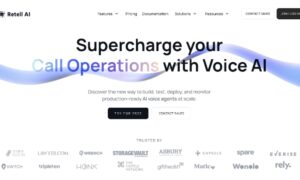In the rapidly evolving B2B landscape, one trend stands out as a true game-changer: technographic data intelligence. As we move through 2026, industry experts predict that over 80% of B2B sales will be influenced by technographic data, marking a fundamental shift in how companies identify, target, and convert prospects.
For sales and marketing teams struggling with longer sales cycles, shrinking budgets, and increasingly complex buying committees, technographic intelligence isn’t just another buzzword—it’s becoming the competitive advantage that separates market leaders from those left behind.
What Is Technographic Data?
Technographic data reveals the technology stack, software tools, and digital infrastructure that companies use to run their business. Unlike traditional firmographic data (company size, revenue, location) or demographic data (job titles, seniority), technographics answer a critical question: What technology is this company currently using?
This includes:
- Cloud platforms (AWS, Azure, Google Cloud)
- CRM systems (Salesforce, HubSpot, Microsoft Dynamics)
- Marketing automation tools (Marketo, Pardot, Mailchimp)
- E-commerce platforms (Shopify, Magento, WooCommerce)
- Analytics tools (Google Analytics, Adobe Analytics)
- Collaboration software (Slack, Microsoft Teams, Zoom)
- Security solutions, payment processors, hosting services, and more
The power of technographic data lies in its predictive value. According to Gartner, over 60% of software purchases in 2025 will be replacement buys, meaning companies already familiar with similar technologies are your most qualified prospects.
Why Technographic Intelligence Changes Everything
Traditional B2B prospecting relied on educated guesses. Sales teams would target companies based on size, industry, and location, then spend countless hours researching and qualifying leads only to discover the prospect wasn’t a good fit.
Technographic data flips this model entirely.
Precision Targeting: Instead of casting a wide net, you can identify companies already using technologies that complement or compete with yours. If you sell a Salesforce integration, you can target only companies actively using Salesforce. If you offer a HubSpot alternative, you can find every company using HubSpot and engage them with replacement messaging.
Perfect Timing: Technology adoption patterns reveal buying intent. When a company recently implemented a new CRM, they’re likely investing in complementary tools. When they’re using outdated software, they’re prime candidates for modern alternatives.
Hyper-Personalization at Scale: With technographic insights, your outreach can reference the prospect’s specific tech stack. “I noticed your team uses Marketo and Salesforce—here’s how our solution integrates seamlessly with both” resonates far more than generic pitches.
According to recent data, companies leveraging technographic intelligence see a 20% increase in sales and a 30% increase in marketing efficiency compared to those relying solely on traditional targeting methods.
Real-World Applications Transforming B2B Strategy
1. Account-Based Marketing (ABM) Supercharged
Technographic data takes ABM from theoretical to tactical. Instead of building target account lists based on guesswork, marketing teams can identify accounts with the exact technology profile that indicates buying readiness.
A SaaS company selling project management software can identify target accounts using legacy tools like Microsoft Project combined with modern collaboration platforms like Slack—a strong signal they’re ready to modernize their project management approach.
2. Competitive Displacement Campaigns
The most powerful application of technographic data is competitive intelligence. Companies can build laser-focused lists of prospects using competitors’ products, then craft messaging specifically addressing known pain points and limitations of those solutions.
This strategy is particularly effective given that 60% of software purchases are replacement buys. Your prospects are already convinced they need the solution category—you just need to convince them you’re the better choice.
3. Sales Enablement That Actually Enables
Armed with technographic insights, sales reps enter every conversation prepared. They know exactly what tools the prospect uses, can speak intelligently about integration challenges, and can position their solution within the context of the prospect’s existing technology ecosystem.
This preparation shortens sales cycles and increases win rates. Research shows that 45% of selling professionals cite incomplete data as a significant obstacle—technographic intelligence solves this problem directly.
4. Expansion and Upsell Opportunities
Technographic data isn’t just for new customer acquisition. By monitoring your existing customers’ technology adoption patterns, you can identify expansion opportunities. When a customer adds new tools that integrate with your solution, it’s the perfect time to introduce additional features or premium tiers.
The Data Quality Imperative
While technographic data offers tremendous potential, its value depends entirely on accuracy and freshness. Technology stacks change constantly—companies migrate to new platforms, add tools, and retire outdated software.
The global B2B data market is projected to grow at 15% annually through 2026, driven by increasing demand for precise, verified business intelligence. This growth reflects a critical truth: in a world where everyone has access to basic company data, competitive advantage comes from superior data quality and intelligence.
Working with reputable technographic data providers ensures you’re building strategies on reliable foundations. Look for providers offering:
- Real-time technology detection and verification
- Comprehensive coverage across software categories
- Regular data updates and refresh cycles
- Compliance with data privacy regulations (GDPR, CCPA)
- Integration with your existing sales and marketing tech stack
Implementing Technographic Intelligence: Getting Started
For organizations ready to leverage technographic data, start with these strategic steps:
Define Your Ideal Technology Profile: What technologies indicate a prospect is a perfect fit? Create detailed profiles that go beyond “uses Salesforce” to specific combinations that signal readiness to buy.
Integrate with Existing Workflows: Technographic data is most powerful when integrated into your CRM, marketing automation platform, and sales intelligence tools. Manual processes defeat the purpose of having rich data.
Train Your Teams: Sales and marketing teams need to understand how to interpret and act on technographic insights. What does it mean when a prospect uses certain technology combinations? What pain points do specific tools indicate?
Test and Refine: Start with focused campaigns targeting specific technology profiles, measure results, and refine your approach based on performance data.
Stay Current: Technology adoption patterns change. Regularly review and update your target technology profiles and competitive intelligence strategies.
The Future of B2B Intelligence
As we look toward the latter half of 2026 and beyond, technographic data will become even more sophisticated. AI-powered analysis will predict technology adoption trends before they happen. Integration with intent data will reveal not just what technologies companies use, but when they’re actively researching replacements or additions.
The B2B ecommerce market reaching $36.16 trillion by the end of 2026 means more companies than ever are investing in digital infrastructure—and each investment represents an opportunity for vendors who can identify and engage them at the right moment.
Companies that master technographic intelligence today will dominate their markets tomorrow. Those that continue relying on outdated prospecting methods will find themselves increasingly irrelevant in a market where precision beats volume every time.
Final Thoughts
The revolution isn’t coming—it’s already here. With over 80% of B2B sales influenced by technographic data in 2026, the question isn’t whether to adopt this approach but how quickly you can implement it effectively.
The winners in today’s B2B landscape aren’t those with the largest sales teams or the biggest marketing budgets. They’re the organizations that combine quality data intelligence with strategic execution, delivering the right message to the right prospect at precisely the right moment.
Technographic data provides the intelligence. Your strategy determines the results. The time to act is now.
Read More From Techbullion



































